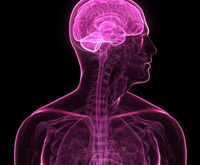Ever wonder why watching someone get hurt can make your own stomach sink? Or why, when another person experiences joy, it can make you smile? The ability to feel something we see, read, hear or think is due to mirror neurons located in our brain. These specialized neurons reflect our social world back to us, hence their name mirror neurons. So when we see someone else smiling, the mirror neurons in our brain for smiling light up and we immediately experience or feel, in a milder form, the emotion that we perceive in the other person.
Humans are highly social creatures. Our safety and ability to interact with others is highly dependent on being able to read another person’s actions, intentions, behaviors and emotions. Our mirror neurons helps us do that.
For example, if your child comes home with his head hung low, you might wonder if something happened to make him feel upset. The way you interact with your child will probably be different than if he bounds through the door with a huge smile on his face.
Since mirror neurons were only discovered in the 1980’s, the implications are not fully understood, but the possibilities are fascinating, particularly in regards to parenting. I can’t help but think about times I have spent with my child when she is hurt or distressed. If I didn’t need to keep it together for her sake, I would want to break down and cry because my empathy for her is so immense. Sure it is my child (and crying is an evolutionary trigger meant to illicit action from caregivers), but still, I can’t help but wonder how much of my reaction is due to my mirror neurons. Perhaps a more fascinating application is when I’ve found myself following my busy toddler, I sometimes struggle to stay focused. I wonder if I am picking up on my child’s rapidly shifting mental states. Other times I have found myself going from happy to irritable, out of what seems like nowhere. When I assessed the situation over time, I invariably noticed that my daughter was tired even though she wasn’t always acting out. Again, I wondered if I were feeling what she was feeling as way to help me attune to her. Therapists call this “projective identification” – when someone projects (or picks up on) a feeling state of another person. With the discovery of mirror neurons we now know that we do feel a portion of what those around us feel. As a parent, I wonder if our mirror neurons help us pick up on the “internal state” (feelings) of our children so we can appropriately attune to them, especially the youngest, who can’t yet communicate. So the next time you find yourself feeling something that seems incongruent with your own mood, perhaps you are picking up on the internal state (feelings) of someone around you, maybe your child. Try using the information to attune to them. Just be careful not to project your feelings on to the other person, particularly your child, which is very easy to do.
Some of what research has documented in regards to mirror neurons:
– People with stronger audio mirror neuron responses seem to have a larger capacity for empathy. This may suggest that the mirror system is part of the brain mechanism that produces altruistic behavior because if you have more mirror neurons, and can feel another person’s situation then you may be more motivated to act on their behalf.
– The mirror system seems to be activated only in social contexts. This is why it is believed to be a way for us to understand our social world.
– Mirror neurons work best in real life, when people are fact to face. Think about hearing a sad story over the phone versus talking to a friend face to face.
– The mirror system is thought to be involved in the human capacity for language. New research suggests that language may depend at least in part on representations of the physical world – a much more concrete way to conceptualize language. For example, when we hear the word cup, we may picture a cup in our heads and associations with that. This is fascinating if one thinks about the meaning of words and that each of us may hold different associations with any given word.
– Professional athletes and coaches may have tapped into the practice of mental imagery without knowing it’s biological basis. Observation and visualization directly improve muscle performance via mirror neurons.
– Mirror neurons are thought to be a big part of why emotions such as rage or pleasure can be contagious and may underlie mob psychology.
– The more vivid a portrayal of someone experiencing an emotion or performing a task, the more mirror neurons are activated. This is why movies may hit home more than books or pictures.
– Mirror neurons certainly give new meaning to the old saying, “I feel your pain”.

